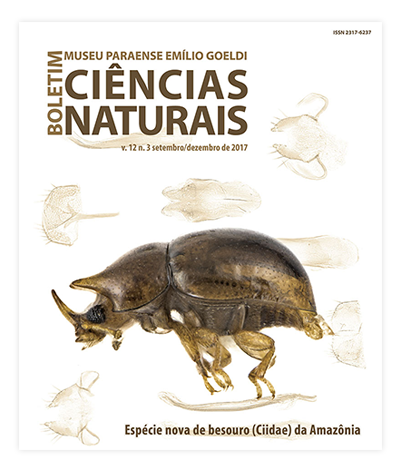Quantification of soil microbiota under different integrated production systems in meridional Amazon
DOI:
https://doi.org/10.46357/bcnaturais.v12i3.378Keywords:
Crop-livestock-forest integration, Real-time PCR, 16S rDNA gene, 18S rDNA geneAbstract
The objective of this study was to quantify the 16S rDNA genes of bacteria and archaea and the 18S rDNA genes of fungi, and the soil chemical attributes under different integrated systems of cultivation, as well as soil under rotation soybean/pasture and native forest, in order to evaluate their differences in the southern Amazon. Systems composed of single, double, and triple eucalyptus and paricá forest species, a native forest area, and a soybean/pasture rotation system were evaluated using chemical and molecular soil attributes, and the data were evaluated by the Kruskal Wallis test and canonical discriminant analysis. The pH, P, H + Al, Mg and organic matter contents presented significant differences, which influence the soil microbiota. The abundance of the microbiota showed significant differences among the evaluated systems. Bacteria (109) were more abundant than archaea (106) and fungi (106). The abundance of microorganisms are regulated and shaped according to the different soil management systems, vegetation, and line arrangements of the crop-livestock-forest integration systems. The fungi presented the greatest variation among the systems and the native forest, serving as a parameter of comparison of stability and environmental conditions. Bacteria did not prove adequate for the comparison of stability and environmental conditions of the studied systems.
Downloads
Published
Issue
Section
License
Publication means fully assigning and transferring all copyrights of the manuscript to the journal. The Liability Statement and
Assignment of Copyrights will be enclosed with the notice of acceptance. All the authors must sign the document and return it to the journal.








